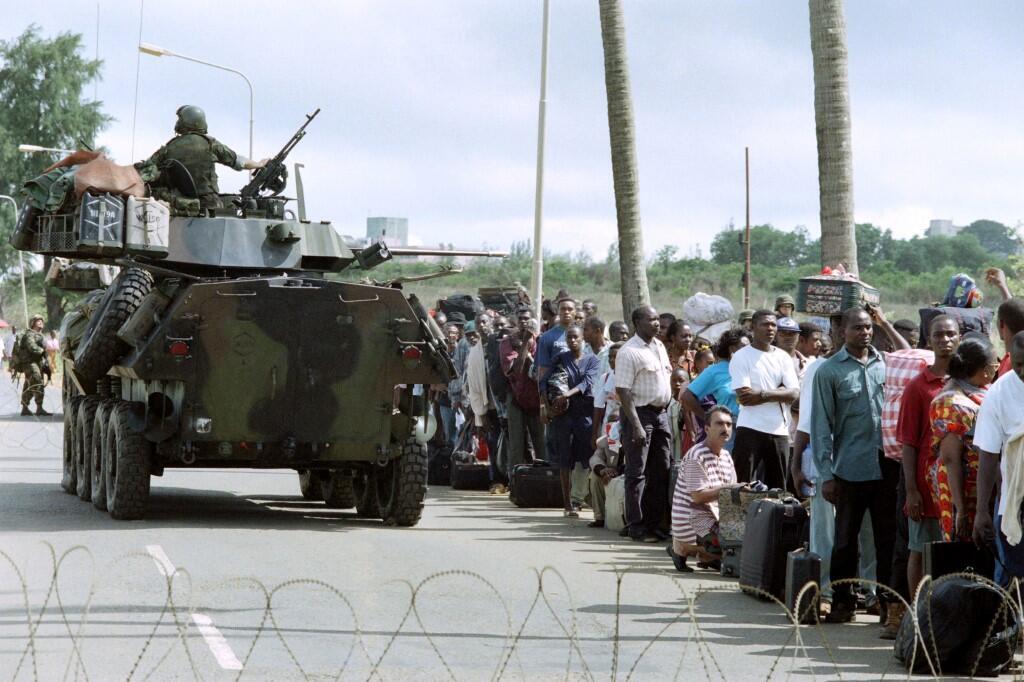Sierra Leone still healing its wounds 30 years after the civil war
Sierra Leone has commemorated the 30th anniversary of the start of its civil war on 23 March, 1991. 120,000 people died during the 11-year conflict and victims of clashes between armed factions and government forces remember this traumatic period as they still struggle to rebuild their shattered lives.
Issued on:

The civil war began in a rural part of eastern Sierra Leone when rebels from the Revolutionary United Front (RUF) launched an attack on the village of Bomaru in an attempt to overthrow the All Peoples Congress government in place.
Traditional chief Vandy Gbosso Kallon has vivid memories of that day.
”They burnt everything, those rebels. They left nothing,” he told RFI’s Christina Okello. “They tortured me too. We really suffered. It was only our faith in God that allowed us to survive.”
Clashes between the rebels and government forces left thousands dead, many displaced. And thousands of child soldiers were recruited. Among them were Kumba Pessima’s two boys.
”My two sons aged 7 and 17 were captured by the RUF rebels,” she says. “I still haven’t heard from them to this day.”

On 6 January, 1999, the conflict spread to the capital Freetown. Teacher Mohamed Sargo Saccoh was living in Bo, Sierra Leone’s second biggest city, when war broke out and split up the family.
”My mother had gone to Kono to visit my uncle, and the war met her there. So she had to run away to Guinea, she did that on foot,” he recalls. “She stayed there for ten years. It’s only recently that she returned. She came back and even her last son is now a very big guy.”
Fragile peace
Many families are learning to live together once more after prolonged separation during the war; others never got that chance.
And while the civil war was officially declared over in 2002, some people fear the factors that sparked the conflict are still there.
"When the Truth and Reconciliation Commission finished its report it stated some of the causes of the war: corruption, injustice, lack of human rights in the communities, poverty and very low level of education, no education at all in some cases," explains Patrick Fatomah, Coordinator of Residual Special Court for Sierra Leone.
"And that there was not a very good distribution of national resources in the country. I asked [the women here] ‘so after the war have all of these signs gone? [and they said] ‘Oh no! In fact they are back’.”
Patrick Fatomah, Coordinator of Residual Special Court for Sierra Leone
Remembrance
A decade after the end of the war, Sierra Leone opened a Peace Museum. Standing on the site of the Special Court of Sierra Leone it’s dedicated to preserving the truth, honouring the conflict’s many victims, and promoting lasting peace.
Its walls are lined with images of mutilated bodies, statues of fighters and photos of broken peace agreements.
“On entering the Peace Museum, we want you to know that the purpose of all of this has a beginning,” says Fatomah.
“From 1991 to 2002, our nation suffered a war of the worst kind. It was a war we waged against ourselves,” he continues. “The Peace Museum is a place to remember memory, to learn to participate and to build a Sierra Leone of lasting peace.”
Civil society groups welcome the museum and the way it encourages the duty to remember in a country which lacks monuments and memorials.
Sulaiman Jabati, from the Coalition for Justice and Accountability, wants to go further. “The government should declare the 23rd of March as victim commemoration day. It’s the day everything changed.”
The Peace Museum is going further. It plans to open the archive room, currently closed due to Covid, to the public. And will inaugurate a memorial garden in tribute to the victims by the end of the year.
Daily newsletterReceive essential international news every morning
Subscribe